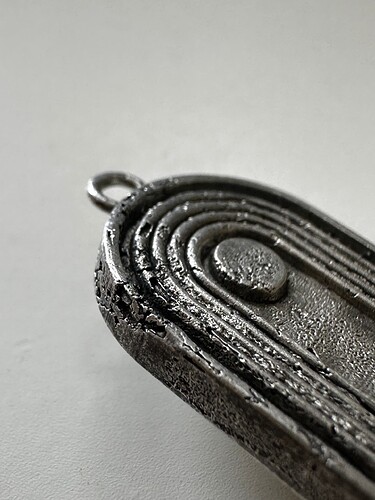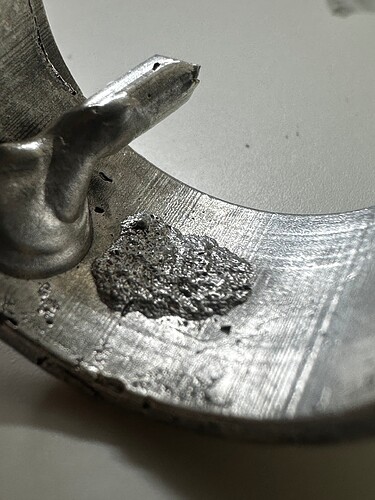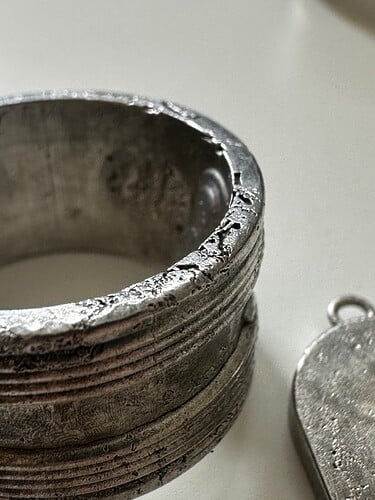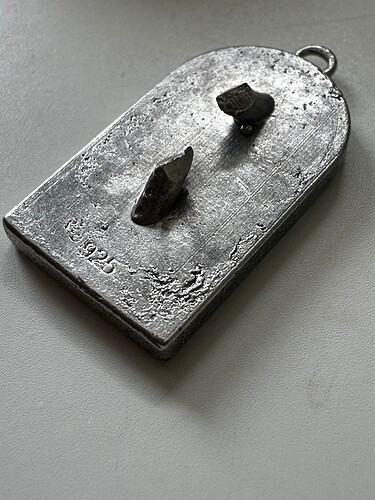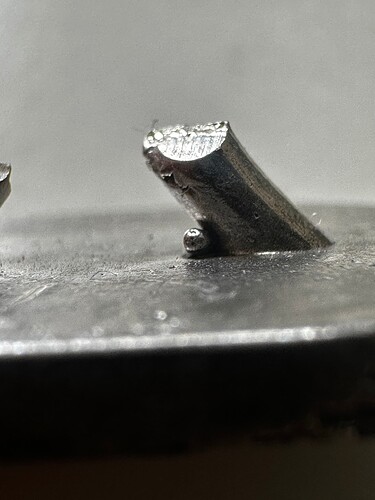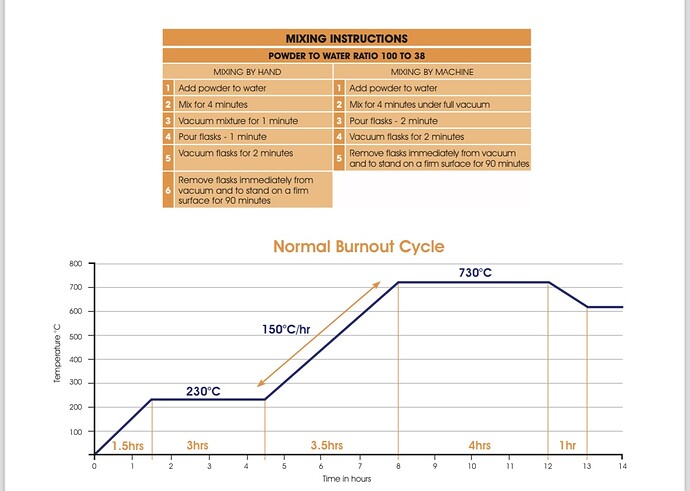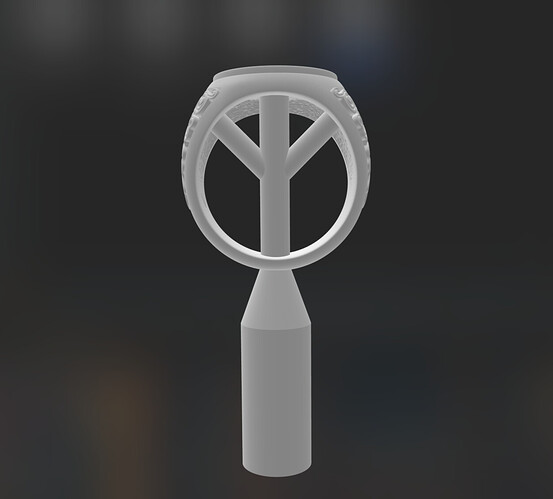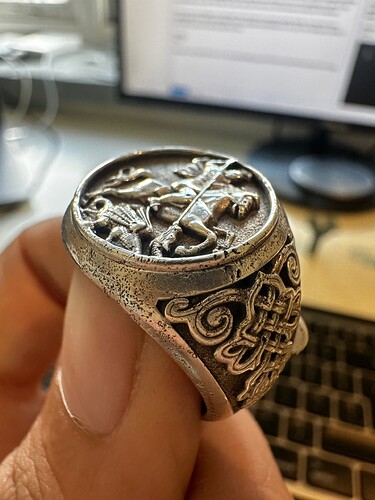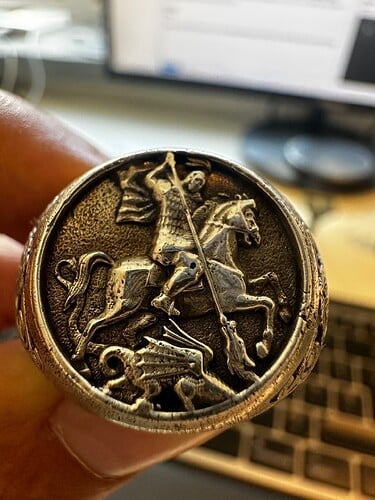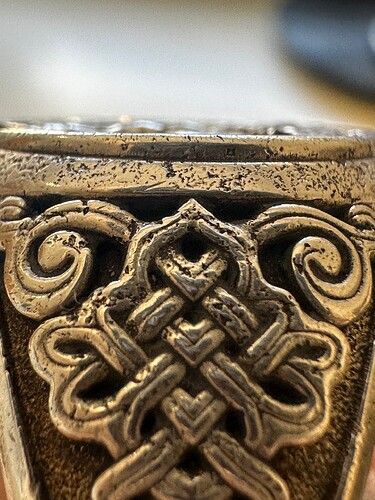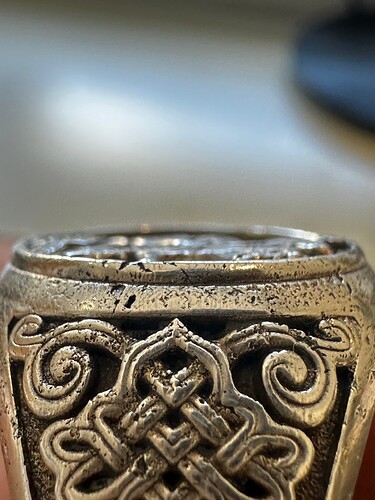Hi,
My name’s Aaron. I’m new here and glad to be joining this community.
I need some help in terms of the defects I am getting from casting sterling silver. I have been working on this for just over a year and a half now and have learned a lot, but one thing that I can’t seem to get to the bottom of is the defects and pitting issues I have within my castings. The defects and pitting isn’t always as bad as seen in the images below, but it always seems to be prevalent never the less.
Just as a quick rundown of my production process, I first print my models through Lychee on the Phrozen Sonic Mini 8K. I use BlueCast X One resin and ensure they are fully cured and cleaned using bioethanol. Once all my models have gone completely white (which ensures they are cured properly), I then sprue them on a wax tree making sure there are no harsh edges between the sprues and the models. To create the mould, I use SRS Silk at a ratio of 100 investment to 38 water, and follow the mixing instructions as seen in the image below. I leave the investment to solidify and dry for 90 minutes before putting it in the Kiln. For my burnout times, I use SRS’s recommended times as also seen in the image below. I hold the flask temperature at 600°C for an hour and start melting my sterling silver at 980°C and hour before pouring. I use the Kaya Cast casting machine and ensure I have a full vacuum before pouring.
As you can see in the images, the pitting seems to be really bad in this instance, and I also have some protruding defects which I have never seen in previous casts before. The sterling silver I used had been used before but was thoroughly cleaned before using it in this instance. The bag of SRS silk is about 6 months old but was tightly tied for that period whilst I was away to ensure no moisture got into the investment.
I would be very grateful if anyone could help me in solving this issue as it is holding me back from starting my jewellery business journey.
Thanks,
Aaron
